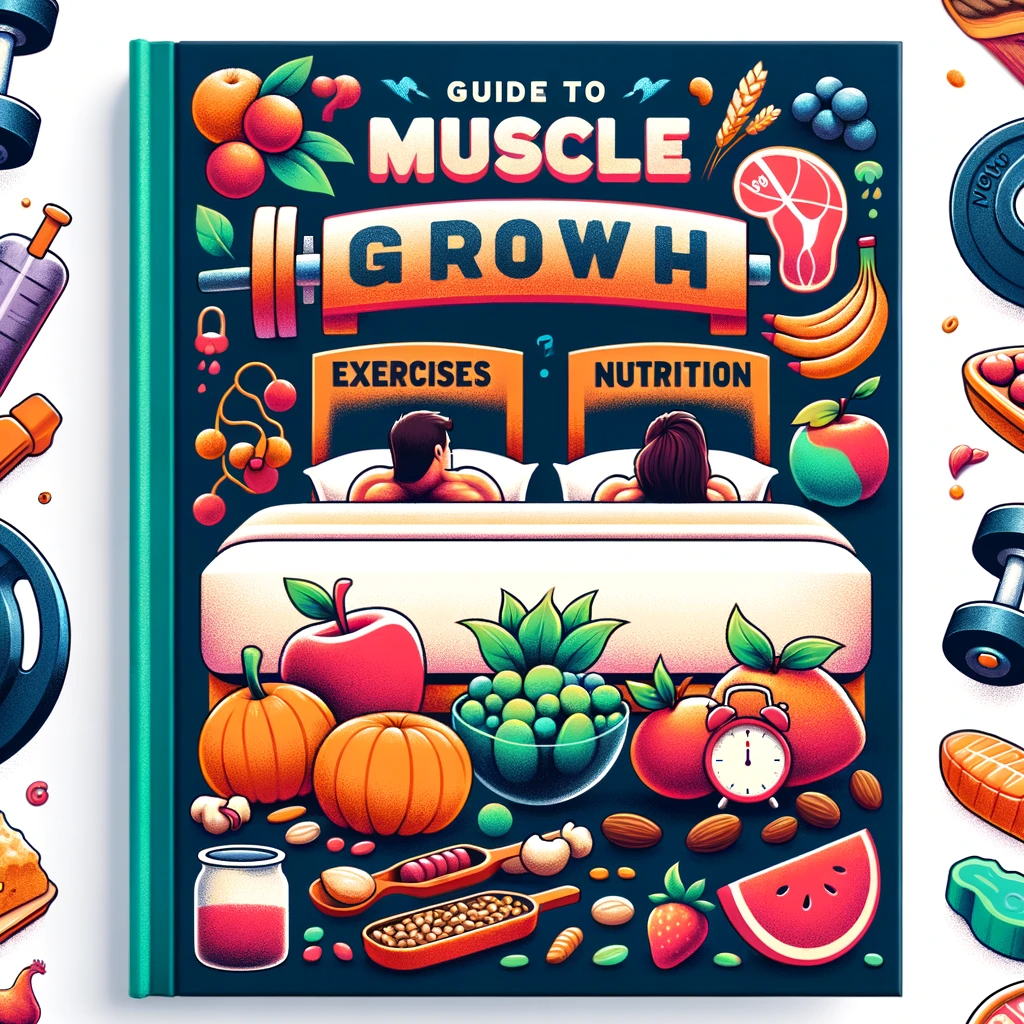Guide to muscle growth: exercises, nutrition and rest

February 9, 2024
Muscle growth, scientifically known as muscle hypertrophy, is a common goal for many fitness enthusiasts and athletes. This process, which leads to increased muscle mass, can be achieved through the proper performance of certain exercises and proper nutrition. In this guide, we will explore how to develop skeletal muscles, what types of exercises to perform, what foods to consume, and when to rest and stretch.
What is muscle hypertrophy?
Muscle hypertrophy occurs when muscle fibers suffer damage or injury during exercise. The body repairs these damaged fibers by fusing them together, thereby increasing muscle mass and size. This process is influenced by several factors, including hormones such as testosterone, human growth hormone (HGH), and insulin growth factor (IGF). These hormones improve the way the body processes proteins, inhibit protein breakdown, activate satellite stem cells involved in muscle development, and stimulate anabolic hormones that promote muscle growth and protein synthesis.
Differences between male and female muscle growth
Both men and women can gain muscle mass, but there are some differences due to factors such as genetics, estrogen and testosterone levels. Muscle growth occurs at different rates depending on gender and physical constitution. People with the mesomorphic body type, who tend to have a more developed muscle structure, can increase muscle mass more easily than other physical types such as theectomorph (thin structure) or endomorph (more rounded structure). However, this does not mean that people with a different body type cannot develop muscle mass, but they may require a different approach to training.
Training for muscle growth
Resistance training is one of the best ways to increase muscle mass. According to the Americans for Physical Activity guidelines, adults should engage in muscle-strengthening exercises involving all major muscle groups at least twice a week. There are several types of resistance training that can be effective, such as free weight lifting, the use of weight machines, exercises with elastic bands, free-body exercises such as pushups and squats, and resistance training classes that combine some or all of these movements. It is important to pay attention to the proper execution of the exercises and the progressive increase in weight or resistance for optimal results.
Benefits of resistance training for the elderly
Resistance training is also particularly important for the elderly, as it can help prevent injury and aid recovery. With advancing age, the risk of limited mobility and musculoskeletal problems such as osteoporosis or osteoarthritis increases. Older adults should try to follow adult physical activity guidelines, or at least remain physically active according to their abilities. Resistance training can be especially beneficial for the elderly, as it can help improve muscle strength and prevent injury.
Cardiovascular activities for muscle growth
Cardiovascular activities, also known as “cardio,” are important for the overall health of the heart and respiratory system. Although some people believe that aerobic exercise does not help build muscle, recent research shows otherwise. Regular cardiovascular activity can support muscle growth and function, as well as increase overall fitness levels and reduce the risk of injury. According to a 2014 review, for optimal muscle-building results, aerobic activities at a heart rate of 70-80% of cardiac reserve are recommended for 30-45 minutes at a time, 4 to 5 days per week.
Rest and recovery for muscle growth
Rest is critical for muscle growth. During rest, muscles have a chance to repair and regenerate. It is important not to overload the muscles, as this can compromise the body’s ability to repair itself. According to the U.S. Department of Veterans Affairs’ MOVE! initiative, you should not train the same muscle group two days in a row. In addition, getting enough sleep is important for the muscle growth process. Sleep deprivation can negatively affect protein synthesis, contribute to muscle mass loss, and hinder muscle recovery.
Nutrition for muscle growth
A balanced and healthy diet is critical for achieving optimal muscle growth. For those who wish to increase muscle mass, protein intake is especially important. Guidelines recommend that adult men take in about 56 grams of protein per day, while adult women should take in about 46 grams. It is also important to pay attention to the timing of protein intake. A 2013 study suggests that consuming 20 grams of protein during or immediately after exercise can stimulate muscle protein synthesis, reduce protein breakdown, and promote more effective muscle recovery. Sources of protein include meat, fish, eggs, milk, cheese, beans, seeds, nuts, and tofu.
Training tips
To get the best results from training, it is important to follow some practical tips. Before starting any physical activity, it is advisable to do a 5-10 minute warm-up and stretch to prepare the muscles. It is important to start with light weights and gradually increase the weight or resistance. When performing the exercises, it is essential to use correct technique, breathing and controlled movement. It is normal to experience some muscle soreness and fatigue after training, but if you experience excessive pain or exhaustion, you may need to reduce the intensity, frequency, or duration of your workouts. It is always advisable to consult a physician before starting a new exercise program, especially if you have health problems or injury concerns.









